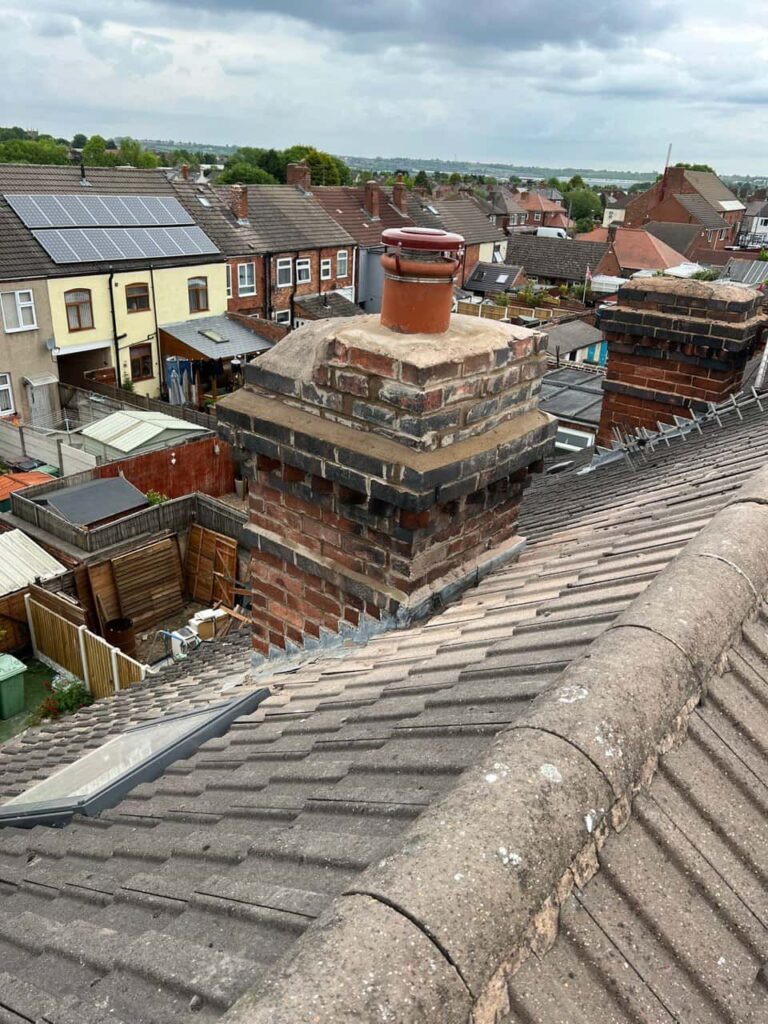When it comes to choosing the right roofing style for your property, the design you select has a major impact not only on the overall look of your home but also on its durability and functionality. Among the many roof types found across the UK, hip roofs remain one of the most popular and reliable choices — especially in regions with unpredictable weather conditions. At MCM Roofing Repairs Verwood, we’ve seen homeowners in Verwood and across Dorset increasingly opt for hip roofs due to their elegant appearance, strong structure, and excellent resistance to the elements.
Understanding What a Hip Roof Is
A hip roof is a type of roof where all sides slope downwards towards the walls, typically meeting at a ridge along the top. Unlike gable roofs, which have two sloping sides and two flat ends, a hip roof has no vertical sides, creating a smooth, symmetrical appearance.
This design makes hip roofs both visually appealing and structurally sound. The inward slope on all four sides provides a balanced load distribution, improving stability and resilience against strong winds and heavy rainfall — an important consideration for properties in the south of England.
Why Hip Roofs Suit Certain Architectural Styles
Hip roofs are versatile and can complement a wide range of architectural designs, from traditional cottages to modern suburban homes. Their popularity in specific styles is linked to both their functionality and their aesthetic harmony with different types of structures.
1. Traditional British Homes
Many classic British houses, especially those built in the early to mid-20th century, feature hip roofs. Their balanced shape complements the symmetry and proportion typical of traditional architecture. For example, hip roofs are commonly seen on:
- Edwardian and Georgian homes: where balance and proportion are central design principles.
- Bungalows: providing compact, low-profile protection and visual harmony.
- Suburban semis: where uniformity and durability are valued in community developments.
Their gentle slope and even appearance blend seamlessly with brickwork, sash windows, and traditional materials, giving a refined finish to period-style properties.
2. Modern Architectural Designs
In contemporary housing, hip roofs have regained popularity due to their ability to complement minimalist, clean designs. Modern builders and architects appreciate their simple yet sleek lines, which pair well with modern façades and natural materials such as stone, timber, and render.
Homeowners who want to combine aesthetics with practicality often find that a hip roof enhances the property’s character while maintaining a timeless quality that appeals to future buyers.
3. Coastal and Rural Properties
For homes in exposed locations such as coastal Dorset or rural areas around Verwood, hip roofs offer exceptional wind resistance. The aerodynamic shape means there are no vertical faces for the wind to push against, reducing the risk of uplift and weather damage.
This makes them a preferred option for countryside cottages, seaside homes, and rural retreats — blending natural beauty with robust protection.
Key Advantages of Hip Roofs
Beyond aesthetics, hip roofs offer several practical advantages that make them a smart long-term investment for homeowners.
1. Excellent Weather Resistance
The four-sided slope design provides outstanding protection from the elements. Rainwater and snow easily run off the roof, reducing the likelihood of leaks or pooling water. This feature is particularly valuable in areas like Dorset, where heavy rainfall can be frequent.
2. Enhanced Structural Strength
Because the roof’s weight is evenly distributed along all four walls, hip roofs are incredibly stable. This makes them more durable and resistant to structural stress caused by strong winds or uneven load distribution.
3. Improved Drainage and Longevity
The continuous slope ensures efficient drainage, preventing moisture from collecting on the roof surface. This reduces the chances of moss growth, damp patches, or internal leaks over time — helping to extend the life of the roof materials.
4. Visually Appealing Design
Hip roofs add a polished, elegant look to any property. Their symmetrical shape enhances the overall aesthetic, giving homes a balanced and cohesive appearance. Whether it’s a small bungalow or a large detached home, a hip roof adds architectural character and curb appeal.
5. Suitable for Extensions and Additions
When extending an existing property, hip roofs integrate easily into new sections of the home, maintaining a consistent appearance. This makes them an ideal choice for loft conversions, garages, and home extensions where design continuity matters.
Common Variations of Hip Roof Designs
There are several variations of hip roofs, each offering distinct advantages depending on the property layout and design preferences.
- Simple Hip Roof: The most common form, with four equal slopes meeting at the ridge.
- Cross Hip Roof: Often found on larger or L-shaped homes, where two hip sections intersect.
- Half-Hip (Dutch Gable) Roof: Combines the strength of a hip roof with the aesthetic appeal of a gable roof by incorporating a small gable at the top.
- Pyramid Hip Roof: Typically used on square buildings, where all four sides meet at a single central point.
At MCM Roofing Repairs Verwood, we can assess which variation best suits your property, ensuring that design, functionality, and durability work together seamlessly.
Why Hip Roofs Remain a Timeless Choice
The enduring popularity of hip roofs lies in their perfect balance between strength and style. They suit both heritage and contemporary homes, provide exceptional protection against the British weather, and require minimal maintenance when properly installed.
For homeowners in Verwood and the surrounding Dorset areas, hip roofs continue to be a trusted choice for both new builds and re-roofing projects. The design’s adaptability and resilience make it suitable for everything from modern extensions to traditional family homes.
How MCM Roofing Repairs Verwood Can Help
At MCM Roofing Repairs Verwood, we have extensive experience working with hip roofs of all types. Our team provides detailed inspections, professional repairs, and complete re-roofing services that maintain the integrity and beauty of your property. We understand the local weather conditions in Dorset and select the best materials and methods to ensure every roof stands the test of time.
Whether you’re planning a new roof installation, need repairs to your existing structure, or want expert advice on the most suitable roofing style for your home, our skilled roofers can provide a professional, high-quality service that delivers lasting results.
Conclusion
Hip roofs are a classic yet practical choice that continues to define British architecture, especially in regions like Dorset where both style and durability are essential. Their symmetrical design, superior strength, and exceptional weather resistance make them a reliable investment for homeowners who value long-term performance and visual appeal.
MCM Roofing Repairs Verwood offers professional roofing solutions across Verwood and Dorset, specialising in hip roof installations and repairs that combine craftsmanship, precision, and attention to detail. If you’re considering a new roof or looking to enhance your home’s design, MCM Roofing Repairs Verwood can help you achieve a result that’s as strong as it is stunning.
Call us on: 01202 149 796
Click here to find out more about MCM Roofing Repairs Verwood
Click here to complete our contact form and see how we can help with your roofing needs.

